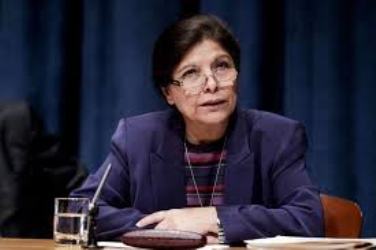
Since its launch in 1967, ASEAN has indeed come a long way in accelerating economic growth, promoting durable peace, and nurturing a common vision in the sub region. The rate of poverty has been reduced from 40 per cent in 1990 to just 8 per cent in 2012 (compared to regional average of 15 per cent), GDP per capita has been raised to almost $ 4,000 over the past decade, and with a combined GDP of $ 2.5 trillion ASEAN is now the seventh largest economy in the world and the third in Asia-Pacific.
As the Association celebrates its 50th anniversary this year, the United Nations Economic and Social Commission for Asia and the Pacific (ESCAP) has been a strategic partner of ASEAN during its journey. Over this period both these intergovernmental and regional cooperation platforms have built a strategic partnership which has seen the development of productive symbiosis ultimately benefiting member countries. As ASEAN gains from the multi-sectoral policy advice and capacity programmes facilitated by ESCAP for the more vulnerable of countries within the sub region, the Regional Commission is able to draw from development lessons of ASEAN as the most successful cooperative arrangement in the region.
There are certainly promising prospects for this largest regional bloc of Asia given its determination to foster the ASEAN Economic Community (AEC) by 2025, the benefits of which will be far reaching for the sub region with positive spillovers for the rest of Asia. Continued strengthening of policy and incentive frameworks, innovation and improvements in productivity is set to double the size of ASEAN economies to $ 4.6 trillion by 2050 as the region will continue to be attractive destination for global investment flows, which already reached over $ 120 billion by 2015. Further reduction in trade costs through the elimination of tariffs, implementation of trade facilitation measures, and progress on the liberalization of services and investment will deepen trade links within the sub region as well as with the wider global economy. Emerging as a consumer hub, almost 125 million household will witness the doubling of their annual income by 2025.
Despite ASEAN’s progress and its impressive economic potential, considerable work still remains to narrow development gaps across countries. The partnership between ASEAN and ESCAP promotes complementarity between the 2030 Sustainable Development Agenda and AEC, which should over the next decade contribute to narrowing national as well as intra-regional disparities, creating balanced urban growth, and mitigating climate change as well as adapting to its effects.
Implementation of urban sustainable goals will be crucial as an additional 25 million people will move to cities by 2025. Building urban resilience will be critical as nearly 40 per cent of ASEAN’s GDP growth will come from 142 cities hosting populations between 200,000 and 5 million people. Creating balanced and inclusive urban growth will require trillions of dollars in investment and effective financial management to provide public services and close gaps in public transportation, ICT infrastructure, housing, and urban environmental management.
* Dr. Shamshad Akhtar is an Under-Secretary-General of the United Nations (UN) and the Executive Secretary of the Economic and Social Commission for Asia and the Pacific (ESCAP)
Source: United Nations Information Center (UNIC) - Tehran
**1771
www.irna.ir
 solhkhabar | Peace International News Agency Peace International News Agency , Peace News , International Agency News of Peace
solhkhabar | Peace International News Agency Peace International News Agency , Peace News , International Agency News of Peace